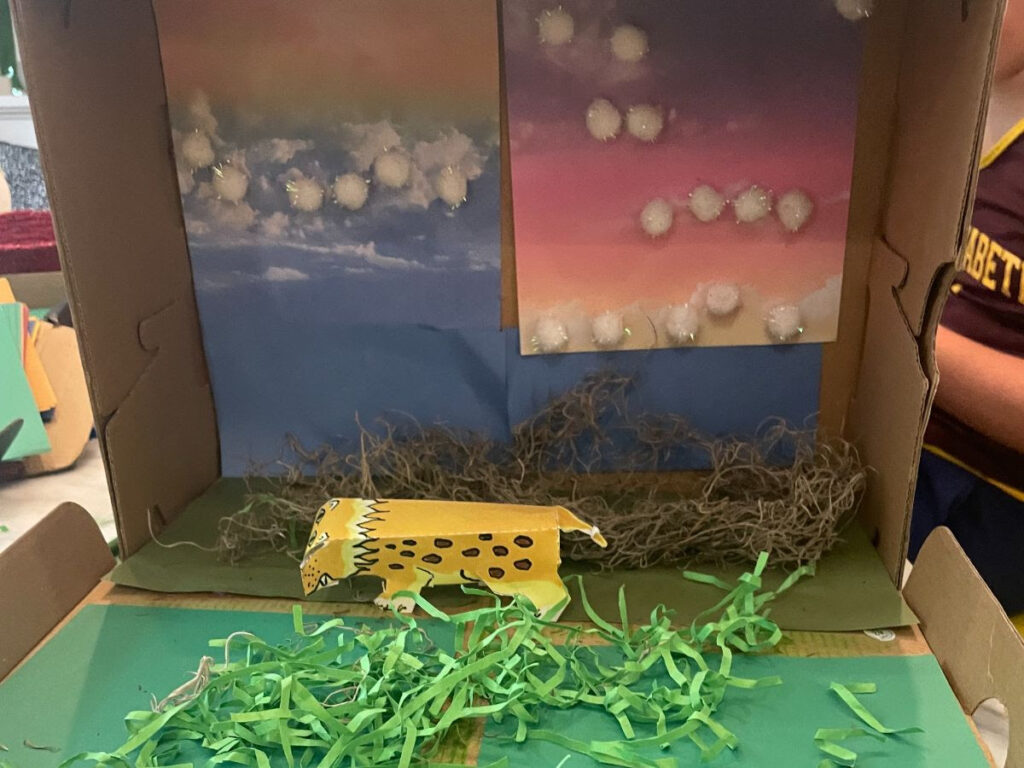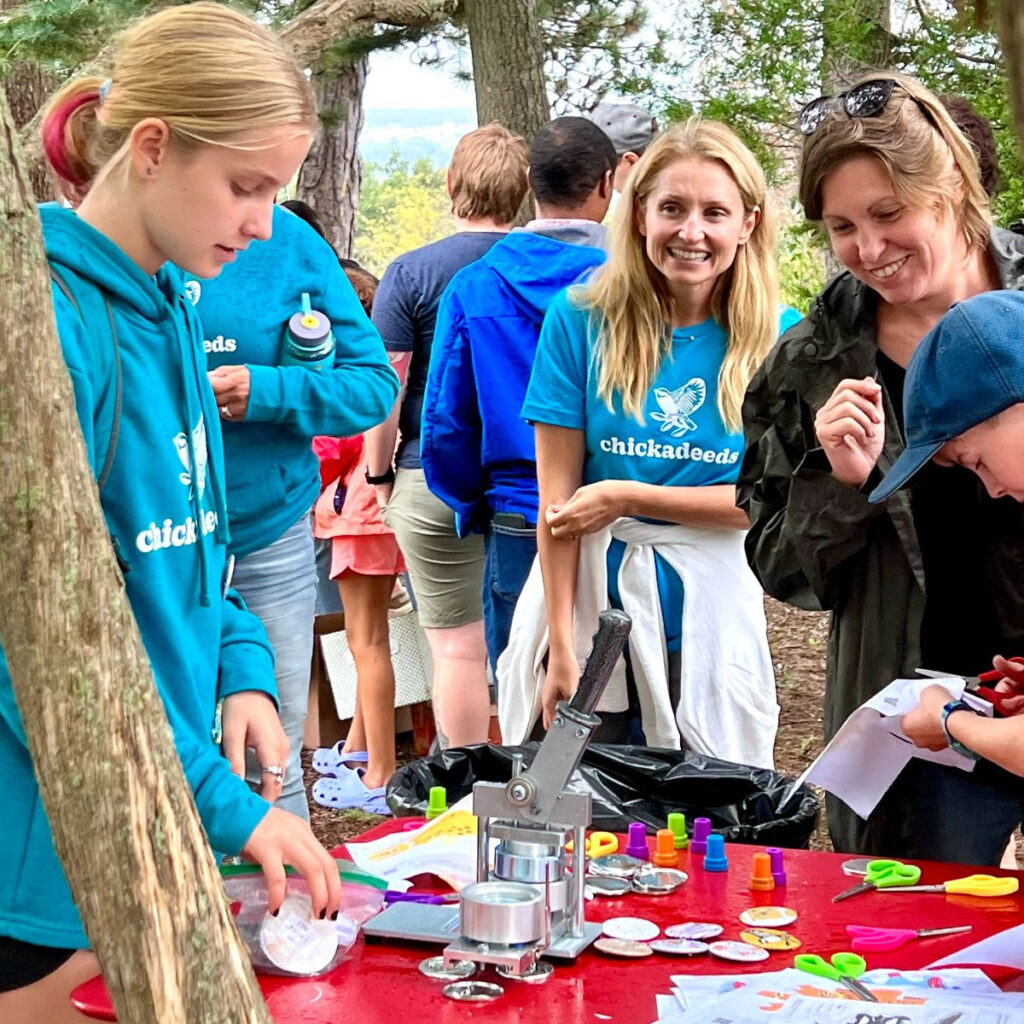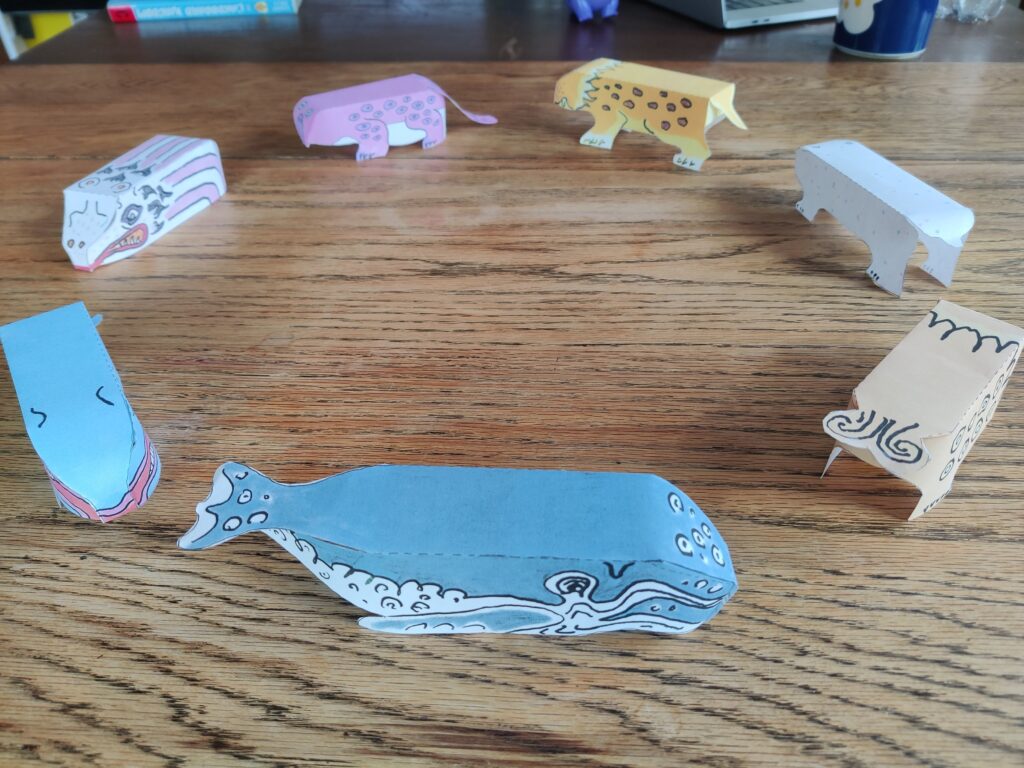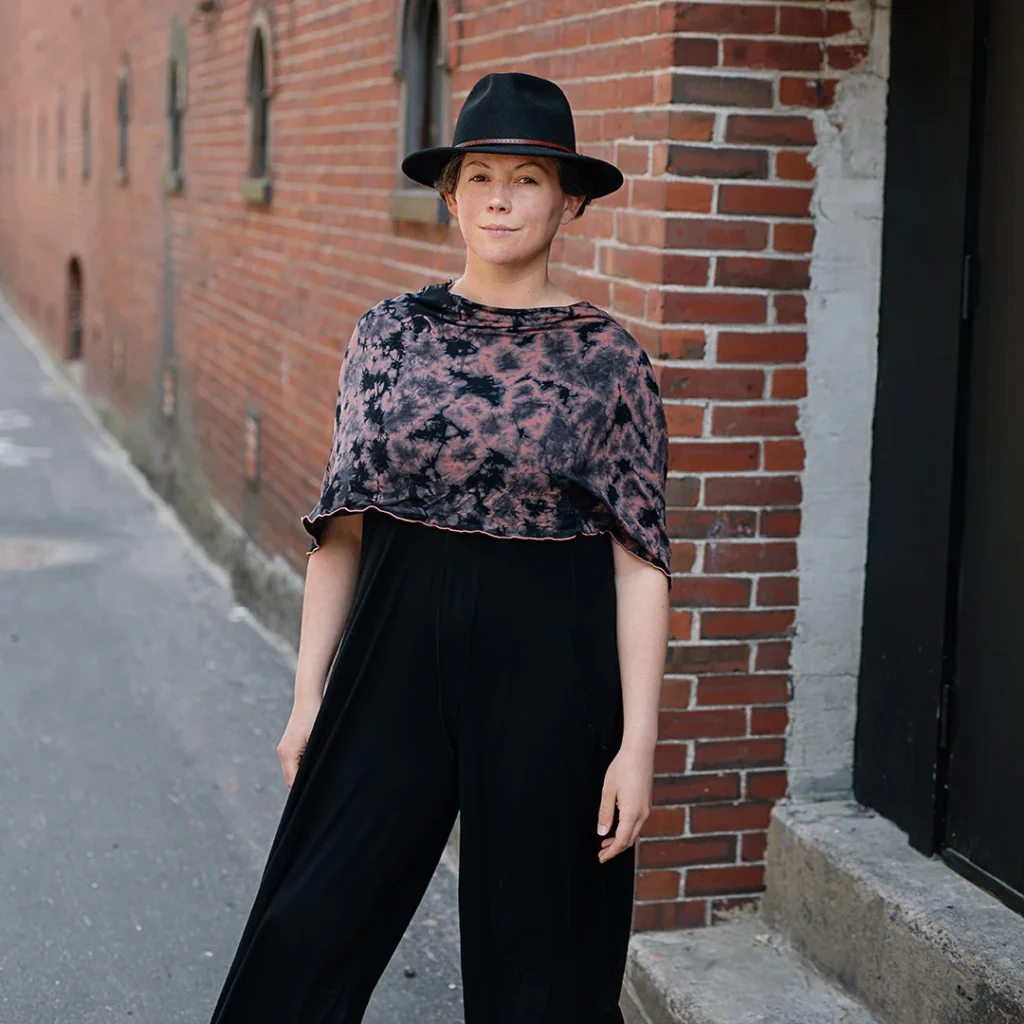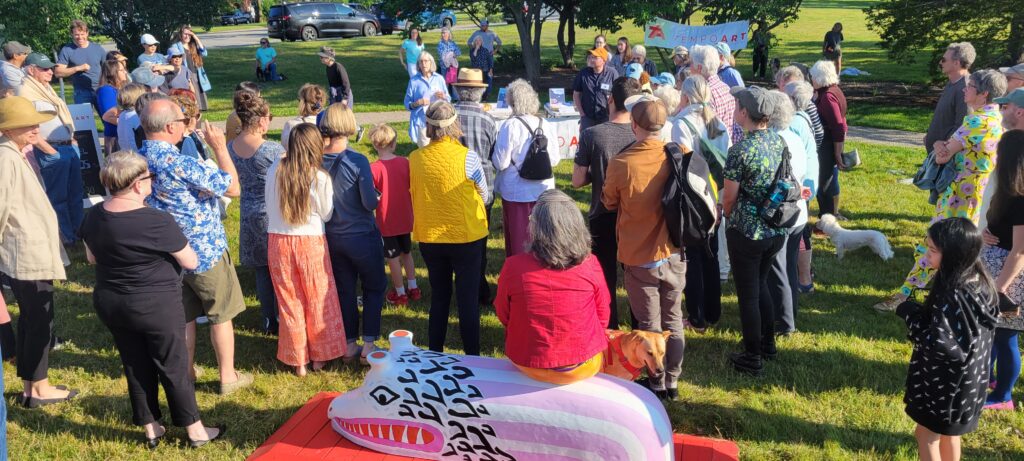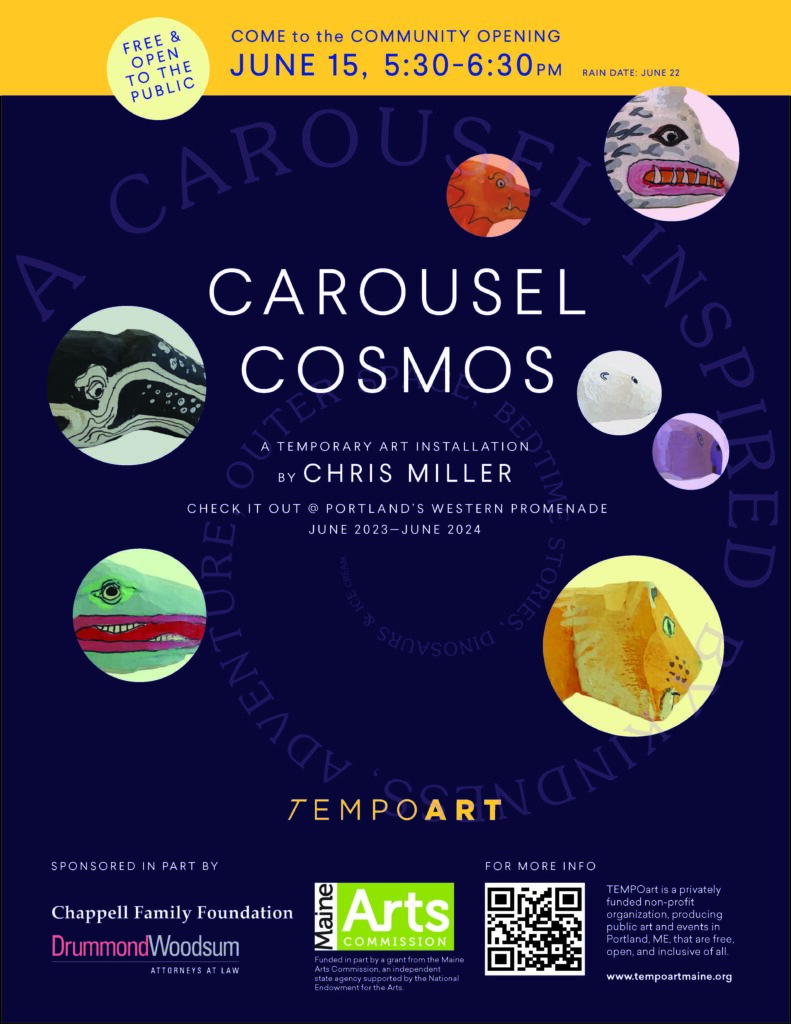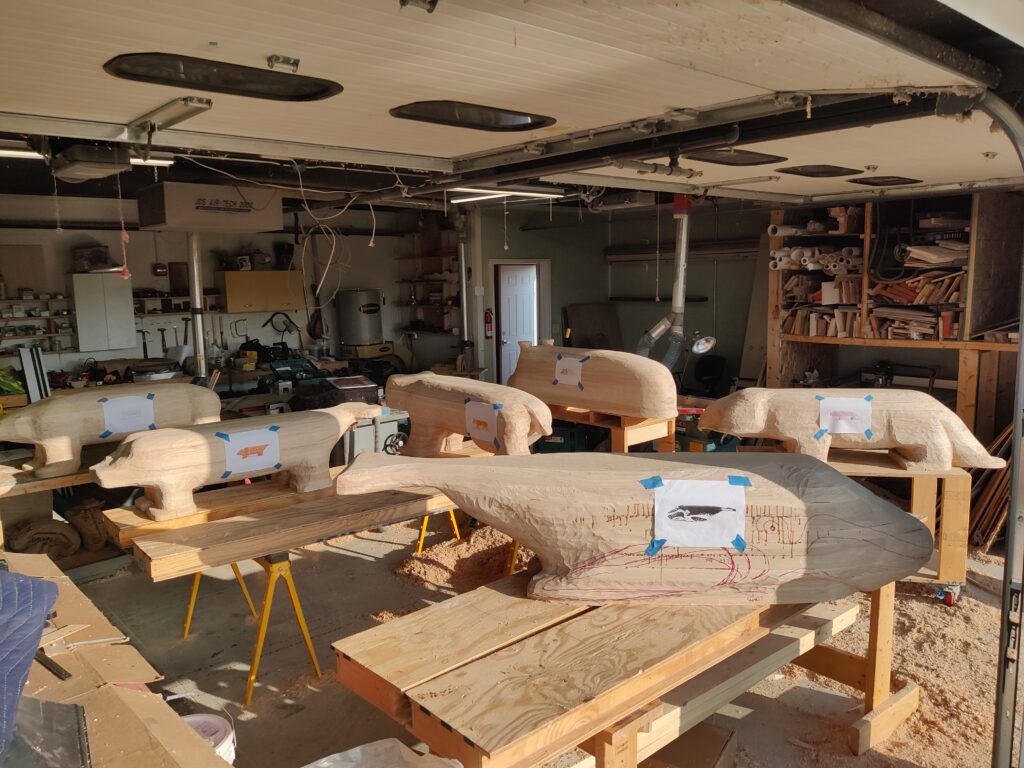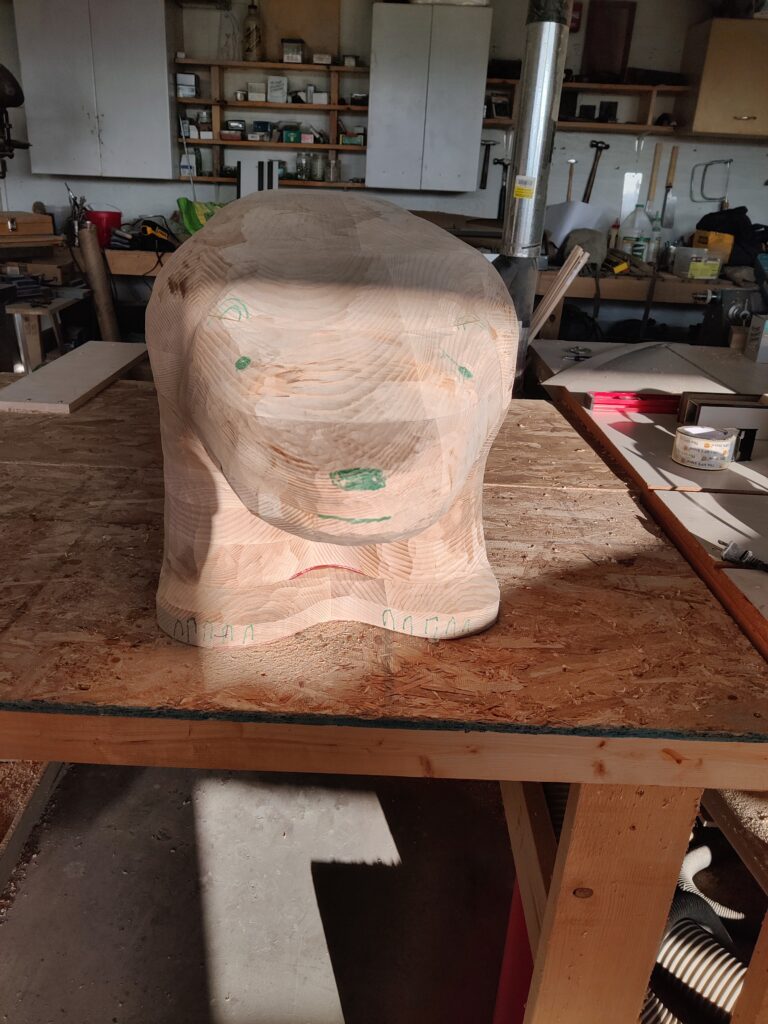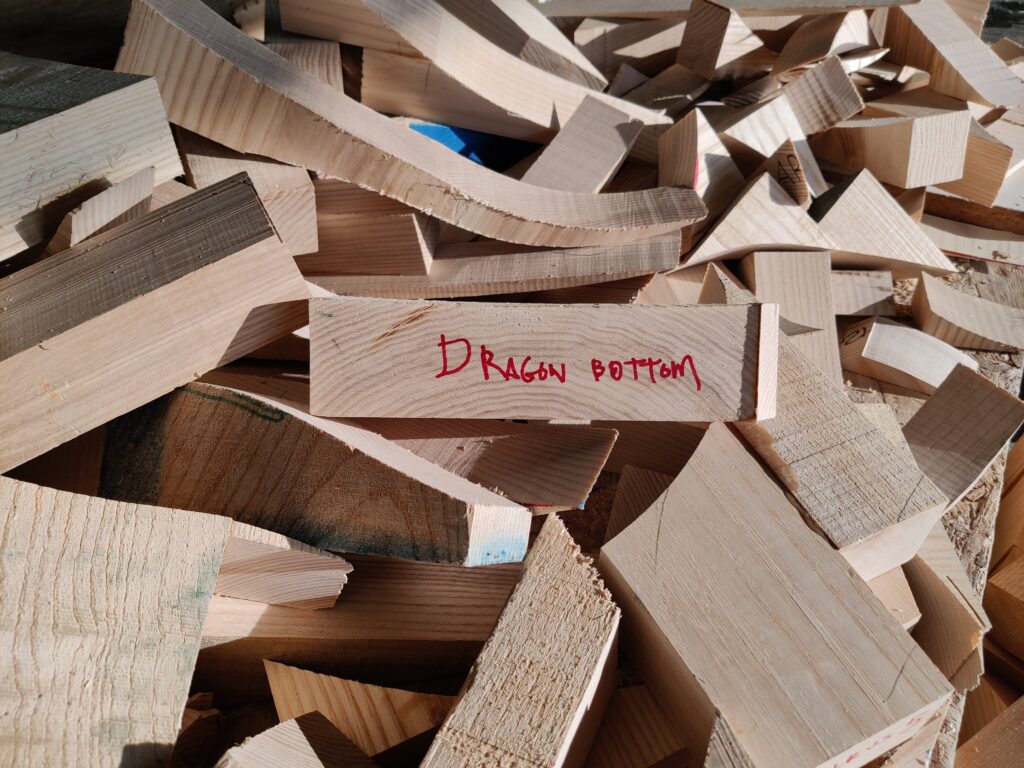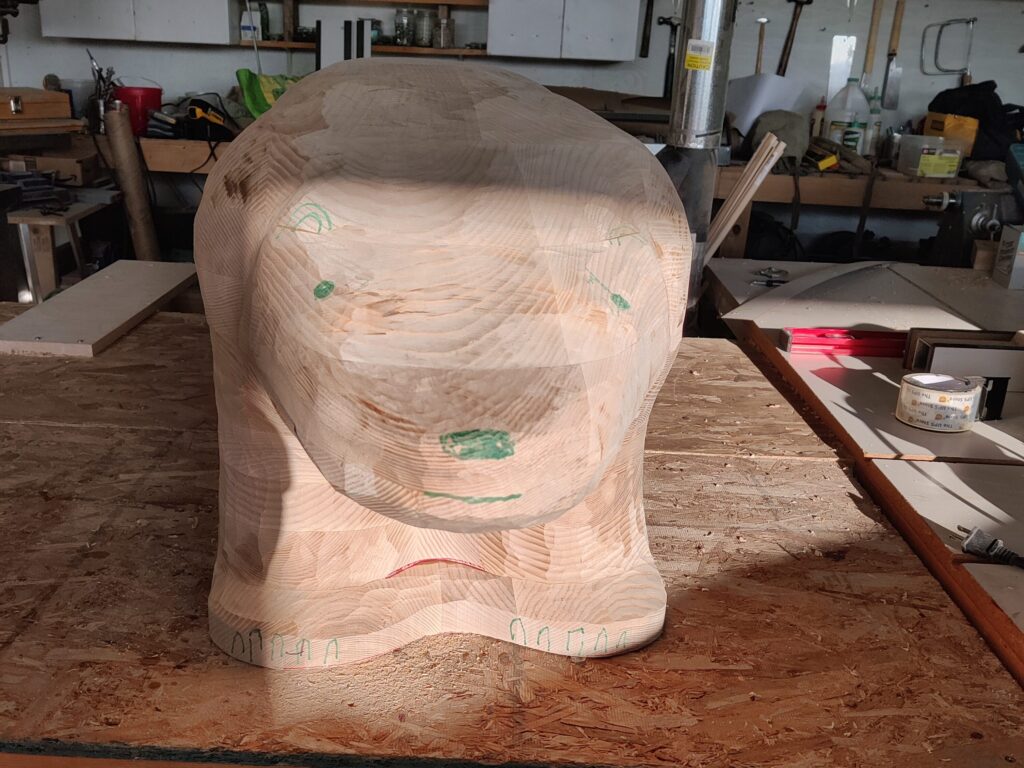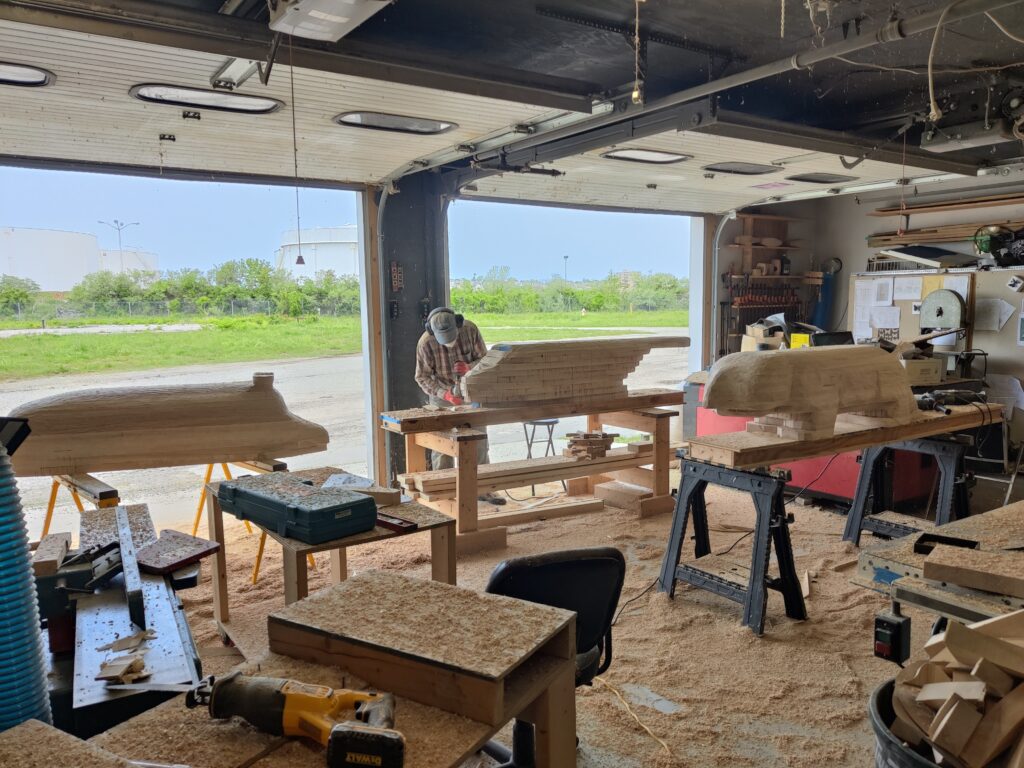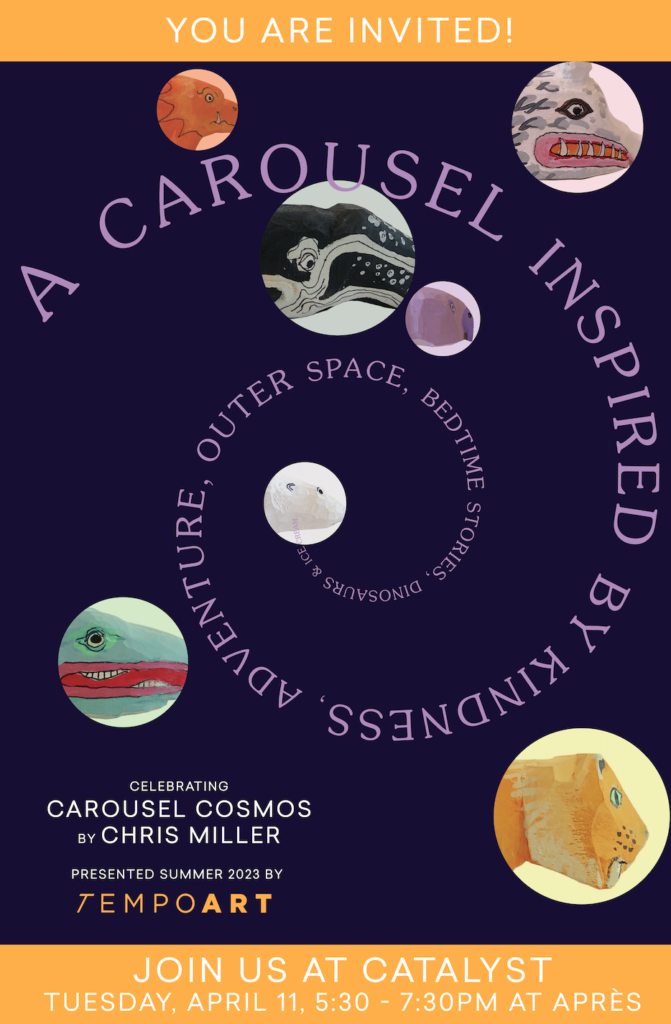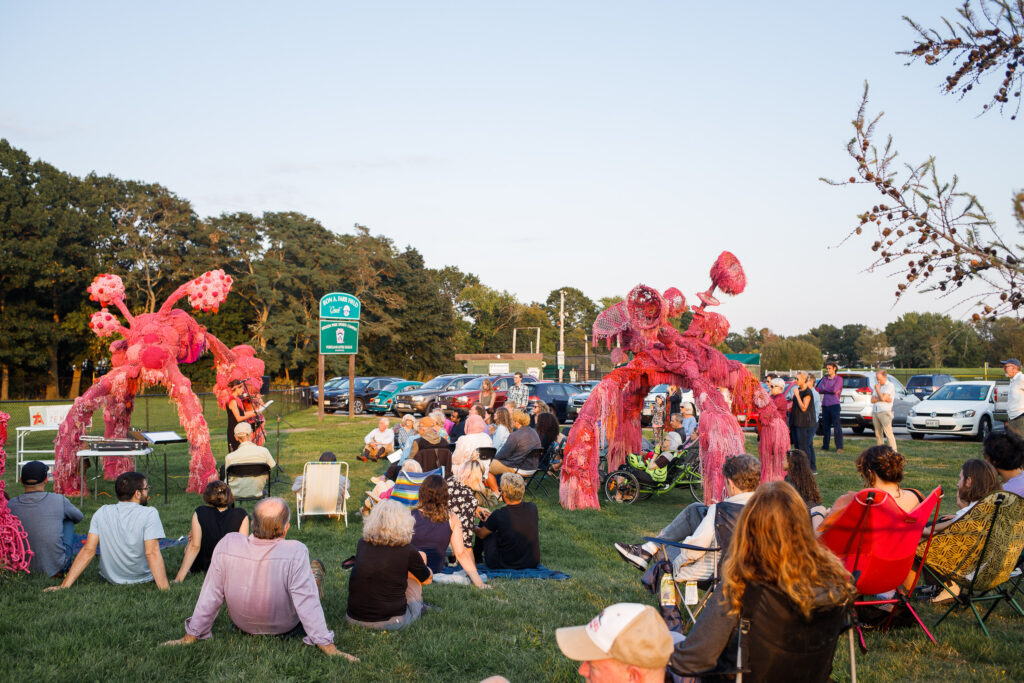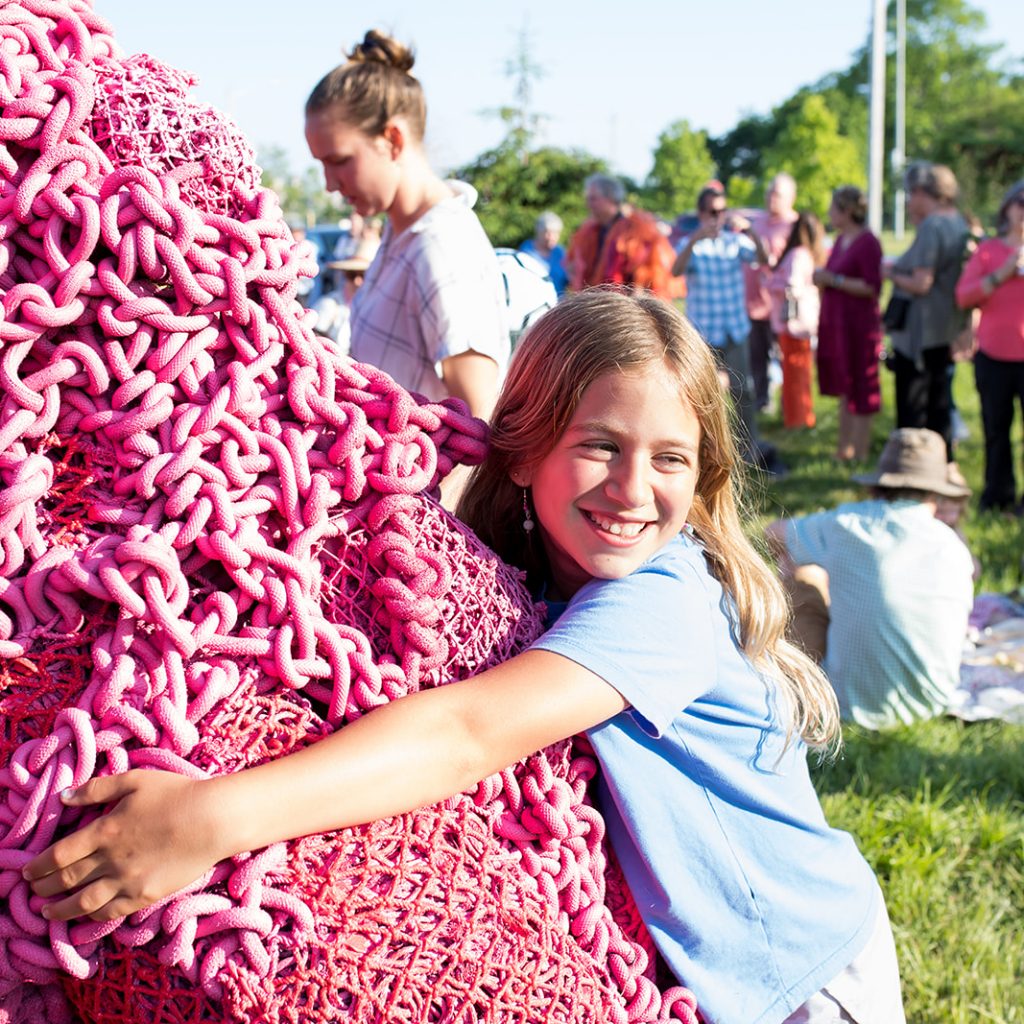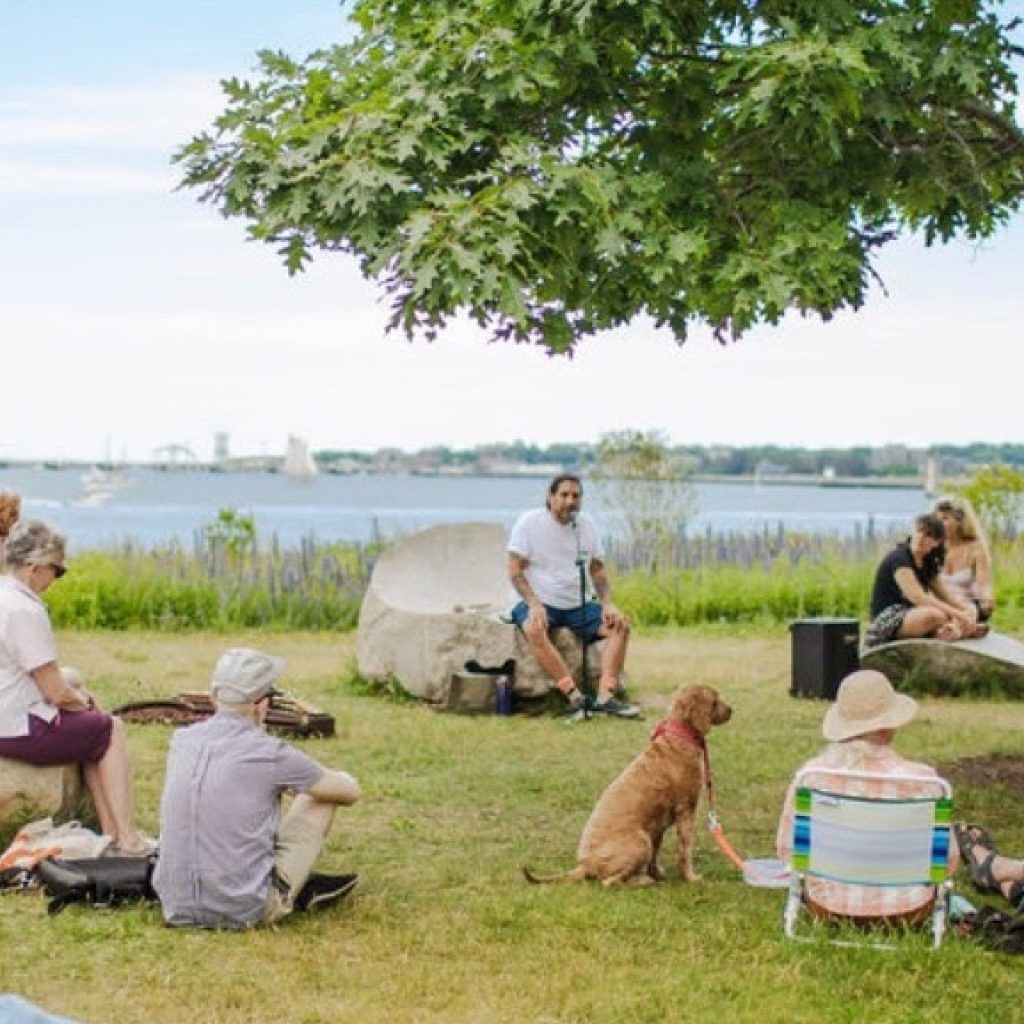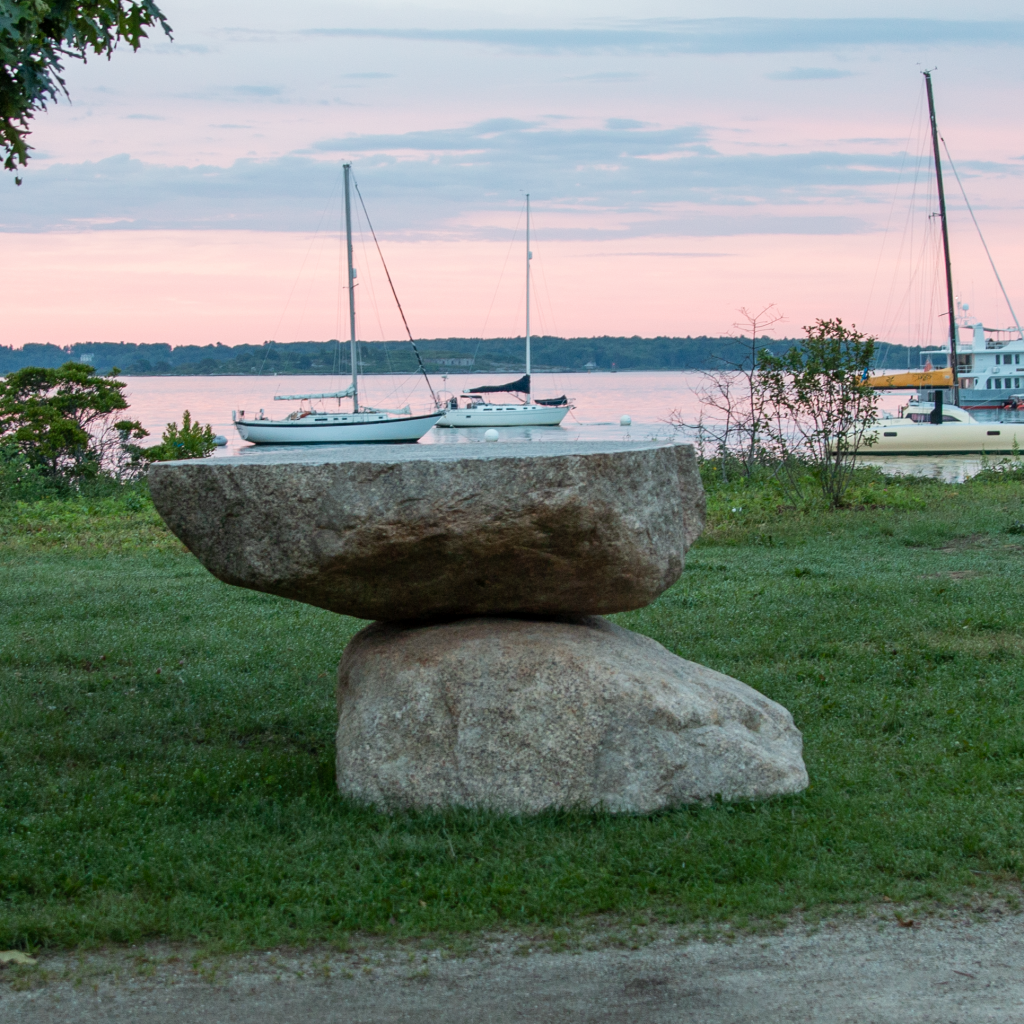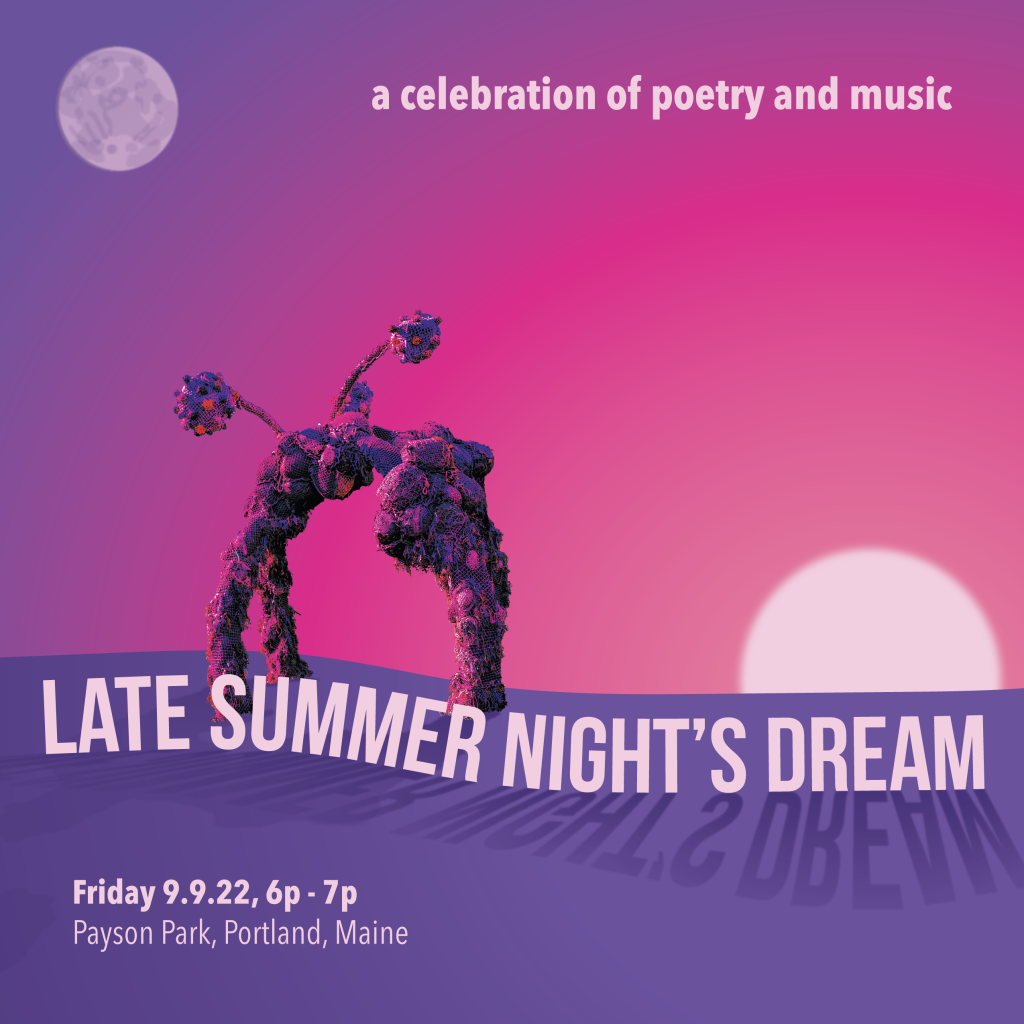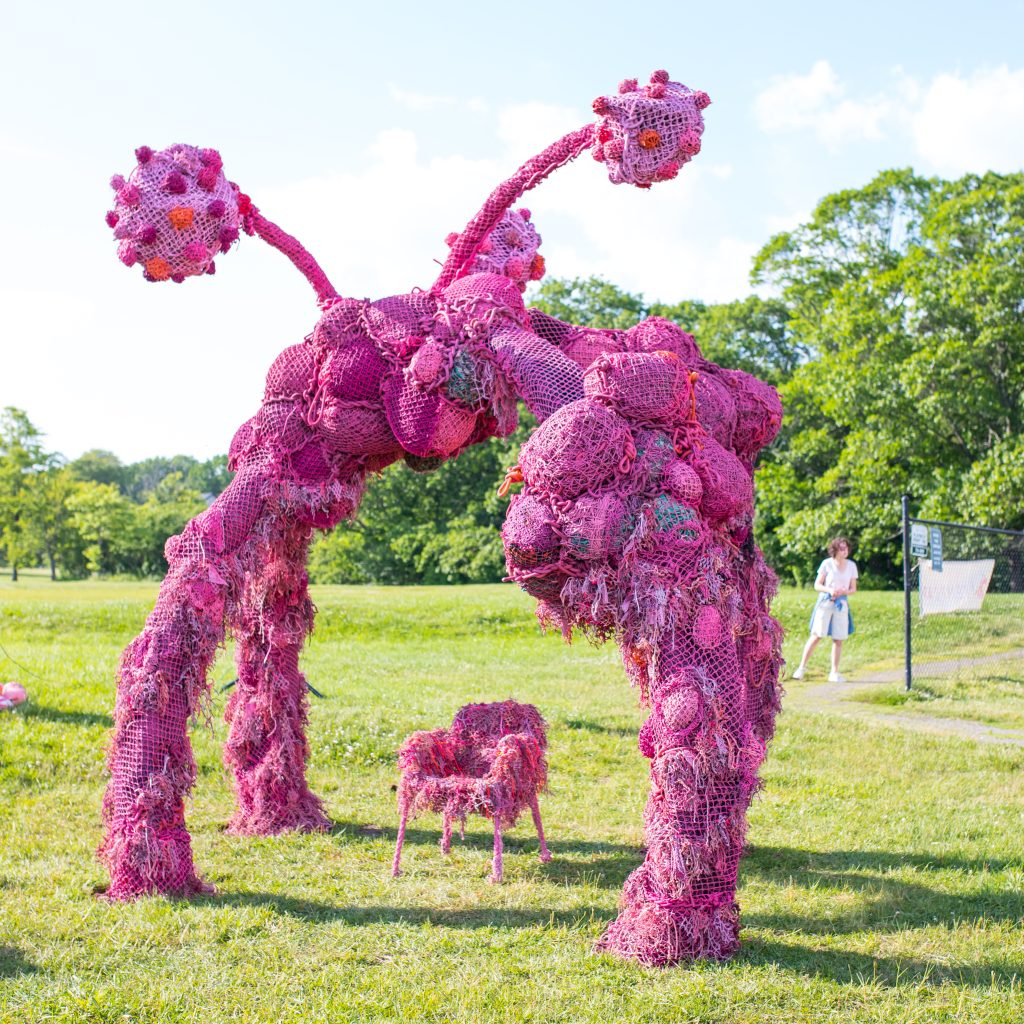Thank you to artist Chris Miller @npdworkshop for working to bring his TEMPOart commissioned work Carousel Cosmos to everyone. Carousel Cosmos is a public art installation, and public art is for everyone. Carousel Cosmos is for Everyone, in all of time and all of space. If for any reason you can’t visit the animals in person, they can visit you.
Chris Miller (the artist behind @tempomaine‘s Carousel Cosmos currently installed on Portland’s Western Prom) designed the Interdimensional Craft Kits that chickadeeds volunteers assembled for pediatric patients in the adjacent Barbara Bush Children’s Hospital!
On September 10, 2023 chickadeeds volunteers gathered on Portland’s Western Prom. Together, we:



Download an Interdimensional Craft Kit for your family via this link! The kit offers an extraordinary opportunity for kids and families to create your own projects with Chris’ 3D animal models, explore concepts about our place in the cosmos, and write your own artist statement.
We are grateful to chickadeeds for partnering with TEMPOart to extend access to public art!

